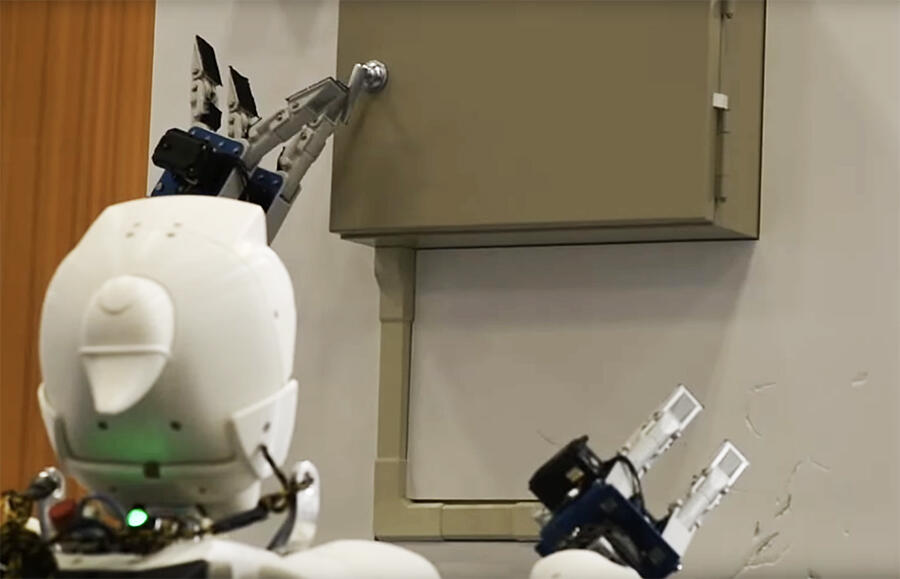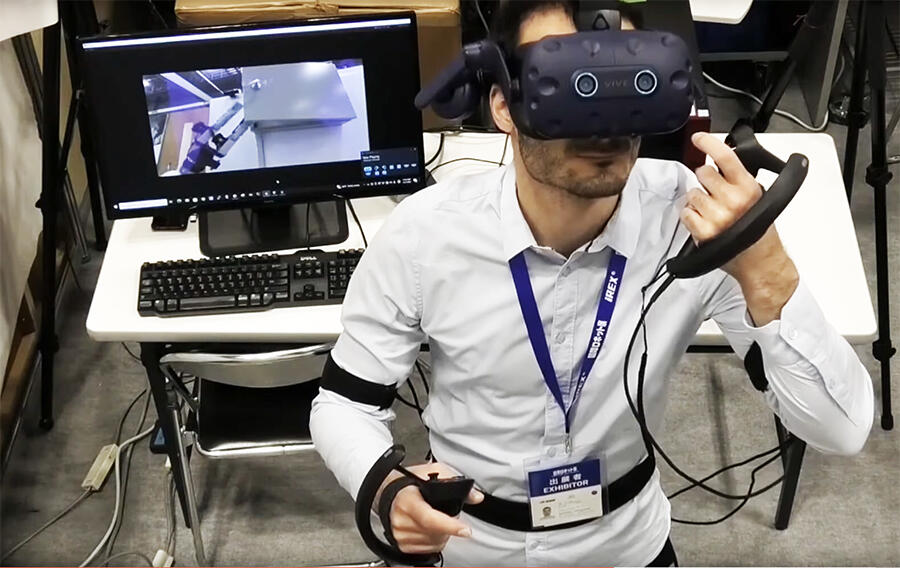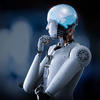You are here
Friends, the robot that adapts in the blink of an eye

What are the distinctive features of humanoid robots?
Guillaume Caron1. We develop humanoid robots for their versatility. They are universal devices that, somewhat like humans, are average everywhere. In terms of their design, they have an enormous degrees of freedom, in other words joints. Bipedalism requires these robots to maintain their balance at all times, which is much more complex than with a robot on wheels, or with an articulated robot arm.
Humanoid robots are especially useful in environments conceived by humans for humans, as their form is adapted to these environments. The robot Digit, created by the American company Agility Robotics, has been present in logistics chains since last year. These devices are not just simple demonstrators or communication tools, but are involved in real-world applications.
What kind of challenges must humanoid robots overcome?
G. C. Loco-manipulation is especially complicated, as the robot has to walk while manipulating objects. In the vast majority of cases, it has to separate these tasks, completing one before turning to the other. It is a challenge to do both simultaneously without the robot losing its balance, as it encounters resistance and friction that is difficult to quantify. It nevertheless has to adapt to these disturbances. At the Irex International Robot Exhibition in Tokyo last December, we organised a demonstration of the robot Friends helping a patient move from a bed to a wheelchair. The machine can move while at the same time correctly placing the patient. This success is in keeping with our HRP-2Kai and HRP-5P humanoids, which can move industrial reels weighing 130 kg with precision!

Can you tell us more about the robot Friends?
G. C. This humanoid robot was designed by the Japanese group Kawasaki Heavy Industries, which is famous in the West for its motorcycles. It is less than 1.66 meters tall, and weighs approximately 50 kilos. We added hands, a camera system in its head and back, as well as batteries and two computers. The first focuses on the robot’s balance, so that it does not fall. The second is for vision, which requires greater computing power, but can also accommodate a somewhat higher latency time.
Kawasaki contacted us to work on Friends after our experience helping Airbus integrate humanoid robots within its airplane production chains, which are difficult spaces to automate due to their enormous volumes. Kawasaki is interested in such industrial applications, but also in the health sector. In the context of an aging Japanese population and projected labour shortages, the company is exploring the automation of certain tasks performed by nursing assistants.
What makes Friends unique?
G. C. Its chief characteristic is that it walks equally well in autonomous mode as when guided by a human equipped with a virtual reality (VR) headset. Better yet, Friends can switch from one type of control to another in less than two seconds, with no need to restart. That is less time than it takes for an operator to put on the VR headset and take the controls. To our knowledge, no other robot can do so as fast and as well.

This function allows the robot to instantly give a human control when it encounters a problem it cannot solve on its own, or if it gets lost. Friends is programmed to learn series of repetitive tasks, but it can still encounter something unexpected, or manipulations that are too fine and that it cannot yet handle without outside help. This switch is made possible by the mc_rtc2 software platform that we developed at the JRL. It originally was used to shift a single controller from one robot to another, and we then developed it further so it could switch from autonomous to human control, and vice versa.
How does Friends manage these two different functional modes?
G. C. The robot is equipped with two types of cameras adapted to each form of control. The first helps Friends detect the objects to be grasped, and to map its environment. Stereo images are then diffused in a VR headset, giving the operator the impression of being in the robot’s place. The machine’s gestures also remain similar to those of humans, in order for the solutions imagined by the teleoperator to be in keeping—as much as possible—with the movements that Friends is capable of, including fine manipulation.
Friends was also designed to appear and act as friendly as possible. With its small size it is less imposing compared to other industrial robots, which is reassuring for the people who work alongside or are assisted by the machine. This is very important for its acceptance.
What advantages does working in an international research laboratory based in Japan offer a CNRS team?
G. C. It gives us access to invaluable partnerships with Japanese companies such as Kawasaki, and Kawada Robotics. We also share skills with our Japanese colleagues at the National Institute of Advanced Industrial Science and Technology (AIST). They are global leaders in the modelling and mechanical design of humanoid robots, as well as their automatic control. We provide them with our experience in software and robot perception, especially in connection with grasping an object and moving to a precise spot, along with switching from one controller to another.
What projects do you have planned next?
G. C. We want to further develop the connection between autonomy and teleoperation, especially by fusing the two instead of switching from one to the other. The idea is for the robot to preserve a kind of semi-autonomy when it is manipulated remotely, for teleoperation leads to lags in data transmission, whether this involves commands from the human or the images being received by the VR headset. This latency translates into a motion sickness of sorts, one that can hinder the completion of a task. The idea would be to allow the system to detect and anticipate the operator’s intentions.
We have also just launched two projects funded by the French National Research Agency. The first will be coordinated by the Laboratory for Analysis and Architecture of Systems,3 and aims for more dynamic interactions between robots and humans. Currently, when someone wants to exchange an object with a machine, one of the two must stand still in order for the other to complete the action. We would like to establish smoother relations, for contexts such as logistics and the factory of the future.
The second project, which we are leading here at the JRL, seeks to improve humanoid robot motion thanks to bio-inspired methods. We will be supported in this effort by biomimicry specialists from the Institute of Movement Sciences.4 We will look closely at ants, which can find their bearings in the desert despite a limited visual memory. Using neither a map nor 3D mapping, but simply a neural network of just a few bytes of memory, we plan to teach robots pathways of a few dozen meters, allowing them to function with systems that are much simpler and energy efficient.
- 1. Guillaume Caron is a Senior Lecturer at l’université de Picardie Jules Verne, and the Deputy Director of the Joint Robotics Laboratory (JRL). The JRL is an international research laboratory located in Tsukuba, Japan, under the joint supervisory authority of the CNRS and the National Institute of Advanced Industrial Science and Technology (AIST, Japan).
- 2. https://jrl.cnrs.fr/mc_rtc
- 3. LAAS-CNRS.
- 4. • CNRS/Aix-Marseille Université.
Explore more
Author
A graduate from the School of Journalism in Lille, Martin Koppe has worked for a number of publications including Dossiers d’archéologie, Science et Vie Junior and La Recherche, as well the website Maxisciences.com. He also holds degrees in art history, archaeometry, and epistemology.





















